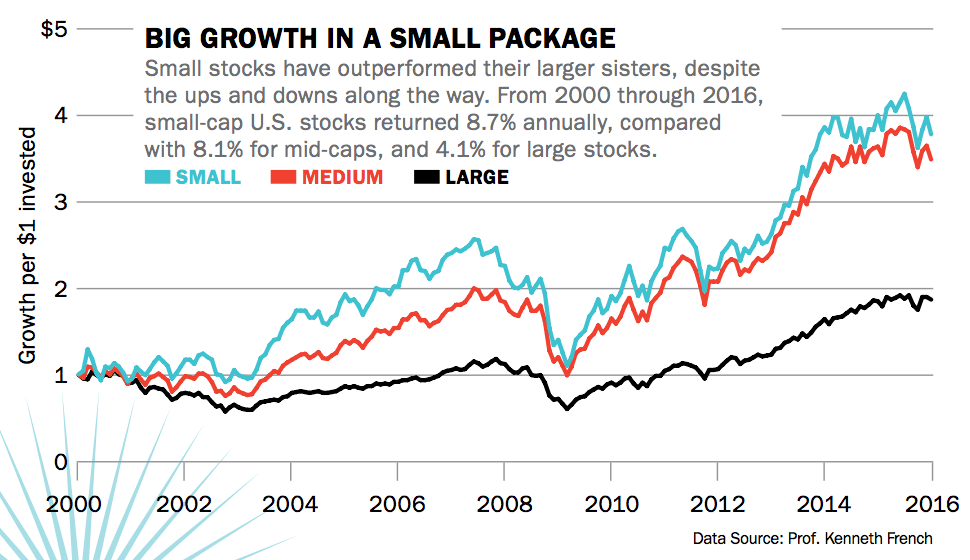
Unlike many funds that have "micro cap" in their names but own scads of larger companies, Aegis is the real thing its holdings have an average market value of just $220 million. So the question you need to ask before taking the plunge is this: Am I willing to endure a gut-wrenching ride in order to win a bigger prize at the destination? Your answer should be yes, as long as you keep tiny caps to a limited piece of your total portfolio - say, 10% at most. Some stocks win, some lose, but history shows that small caps return more than big caps. In those same two years, Hardinge ( HDNG), a machine-tool manufacturer, sank 75%, then recovered 37%. Richardson Electronics ( RELL), a maker of electron tubes that is roughly one-one-thousandth the size of J&J, lost 57% in 2008 and gained 103% in 2009. But see what happens when you pick a few stocks at random from a solid micro-cap fund - say, Royce Micro-Cap Trust (symbol RMT), a closed-end fund run by a shop with a long and generally successful record of investing in small companies. In other words, they gave investors smooth rides even in rough seas. In those same two years, Johnson & Johnson, another blue-chip behemoth, lost 8% and gained 11%. In 2008, mega cap Procter & Gamble lost 14% in 2009, it gained 1%. Individual stocks vividly demonstrate the contrast. But tenth-decile stocks (the smallest of the small) have lost 47% or more five times. Since 1926, the worst single-year performance ever for first-decile stocks was in 1931, when they were down 41%. In those same years, tenth-decile stocks lost 47% and then gained 81%. In 2008, first-decile stocks lost 35% in 2009, they gained 23%. To see the extent of the volatility, you need to look at only two recent years. By comparison, the range of annual returns for the largest companies has been between 29% and -10% two-thirds of the time.


That means that two-thirds of the time, the range of annual returns for these stocks is between 58% and -32%. The standard deviation of stocks in the tenth decile is a whopping 45%. Make no mistake: Stocks of the smallest companies are really volatile. Also, in keeping with what we would expect, risk rises consistently as market caps decline. So stocks in the third decile (with market caps between $3.4 billion and $5.9 billion) returned 10.7% annualized, on average, while stocks in the eighth decile ($431 million to $685 million) returned 11.4%. More remarkable, returns for the deciles in between rise steadily, and near perfectly, as the companies get smaller.


 0 kommentar(er)
0 kommentar(er)
